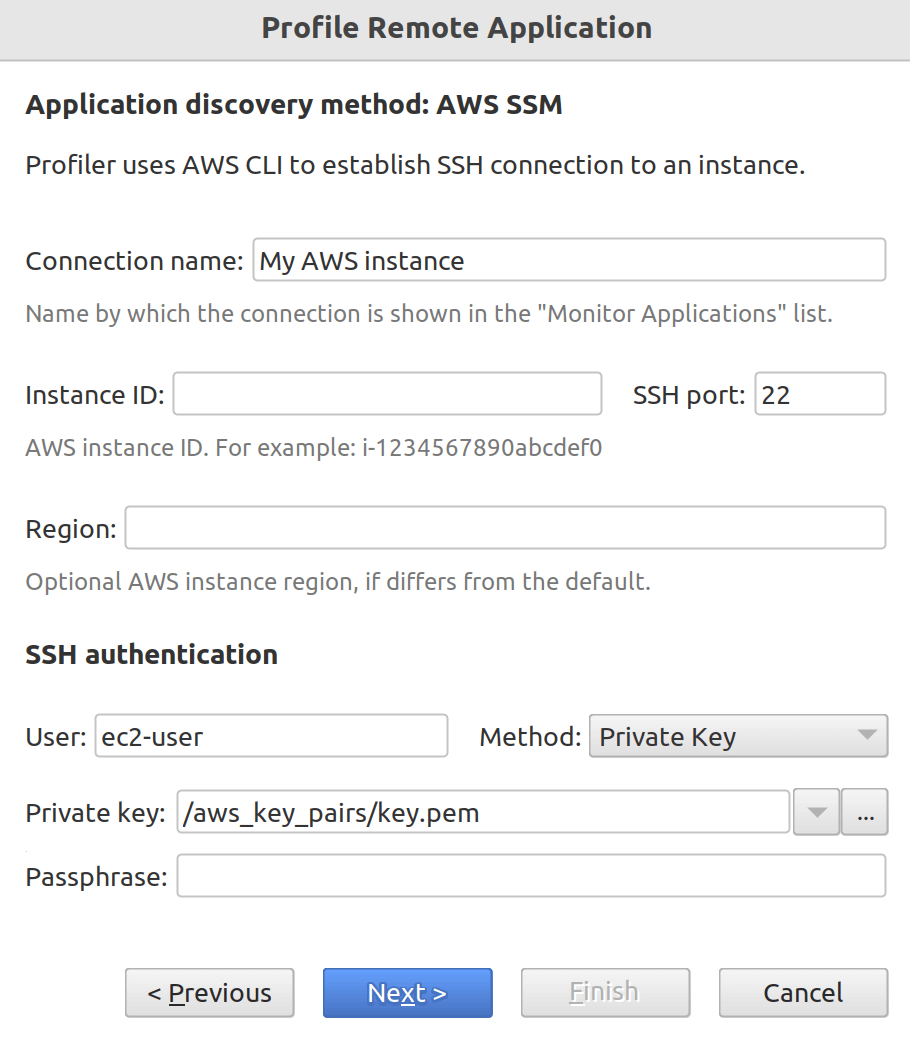- System requirements
- Profiler architecture
- Profiler installation
- Uninstall profiler
- Running the profiler
- Profiler activation
- Welcome screen
- Start profiling
- Profiling overhead
- Snapshots
- Solving performance problems
- CPU profiling
- Thread profiling
- Virtual threads support
- Object allocation profiling
- Memory profiling
- Monitor profiling
- Exception profiling
- Telemetry
- Probes: monitor events of various kinds
- Inspections: automatic recognition of typical problems
- Automatically trigger actions on event
- Automatic deobfuscation
- Summary
- Filters
- Profiler command line
- Export of profiling results to external formats
- Profiler Java API
- Profiler HTTP API
- Settings
- Troubleshooting and FAQ
AWS SSM
If you already use AWS CLI to connect to AWS instances, this method may be a better alternative to the SSH access method. Knowing just the instance ID, profiler will use AWS CLI with SSM plugin to log into the instance and find all running Java applications.
Advantages
- Ideal for profiling Java applications running on an AWS instance.
- Connect to the AWS instance using instance ID.
- No need to expose SSH port.
- Ability to profile applications started without the profiler agent using attach.
Prerequisites
- AWS CLI installed and configured on the local machine.
- Session Manager plugin for the AWS CLI.
- AWS instance with SSM agent .
-
AWS instance must permit SSH port forwarding.
Make sure that
AllowTcpForwarding yesis set in remote OpenSSH server config, usually at/etc/ssh/sshd_configon Linux.
Authentication methods
For authentication on the instance you can use plain password, SSH private key or SSH agent authentication methods.

